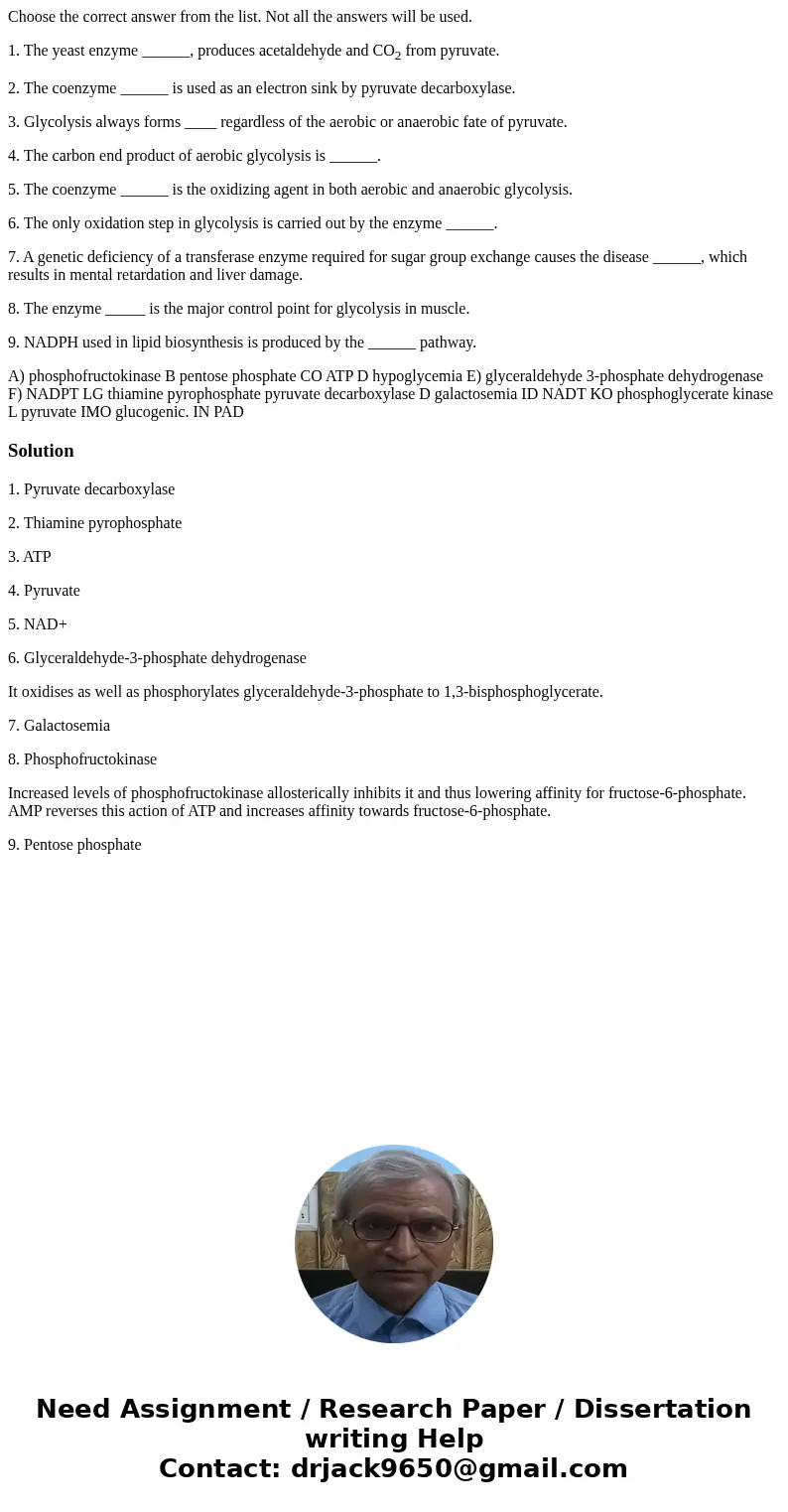Choose the correct answer from the list Not all the answers
Choose the correct answer from the list. Not all the answers will be used.
1. The yeast enzyme ______, produces acetaldehyde and CO2 from pyruvate.
2. The coenzyme ______ is used as an electron sink by pyruvate decarboxylase.
3. Glycolysis always forms ____ regardless of the aerobic or anaerobic fate of pyruvate.
4. The carbon end product of aerobic glycolysis is ______.
5. The coenzyme ______ is the oxidizing agent in both aerobic and anaerobic glycolysis.
6. The only oxidation step in glycolysis is carried out by the enzyme ______.
7. A genetic deficiency of a transferase enzyme required for sugar group exchange causes the disease ______, which results in mental retardation and liver damage.
8. The enzyme _____ is the major control point for glycolysis in muscle.
9. NADPH used in lipid biosynthesis is produced by the ______ pathway.
A) phosphofructokinase B pentose phosphate CO ATP D hypoglycemia E) glyceraldehyde 3-phosphate dehydrogenase F) NADPT LG thiamine pyrophosphate pyruvate decarboxylase D galactosemia ID NADT KO phosphoglycerate kinase L pyruvate IMO glucogenic. IN PADSolution
1. Pyruvate decarboxylase
2. Thiamine pyrophosphate
3. ATP
4. Pyruvate
5. NAD+
6. Glyceraldehyde-3-phosphate dehydrogenase
It oxidises as well as phosphorylates glyceraldehyde-3-phosphate to 1,3-bisphosphoglycerate.
7. Galactosemia
8. Phosphofructokinase
Increased levels of phosphofructokinase allosterically inhibits it and thus lowering affinity for fructose-6-phosphate. AMP reverses this action of ATP and increases affinity towards fructose-6-phosphate.
9. Pentose phosphate

 Homework Sourse
Homework Sourse